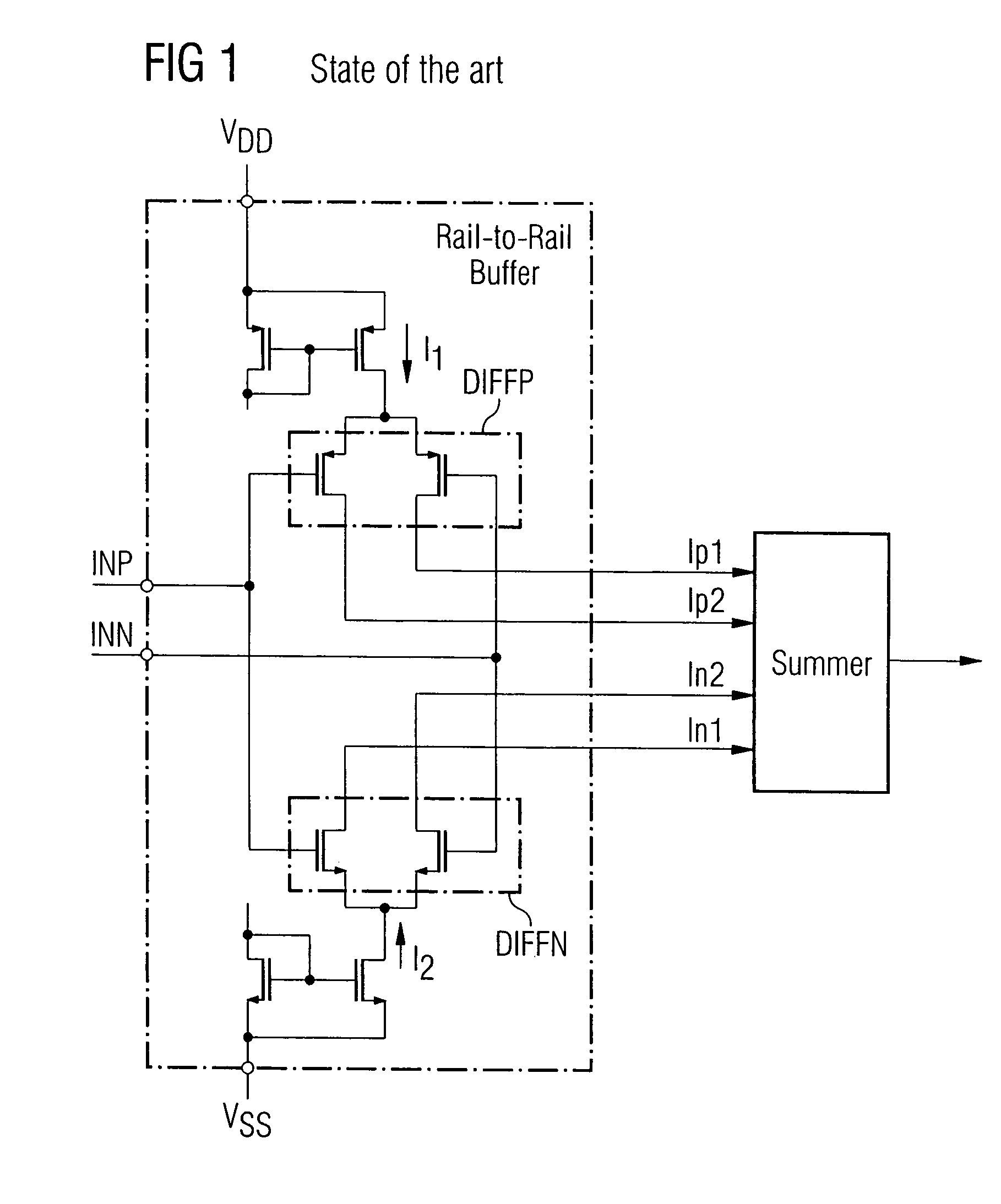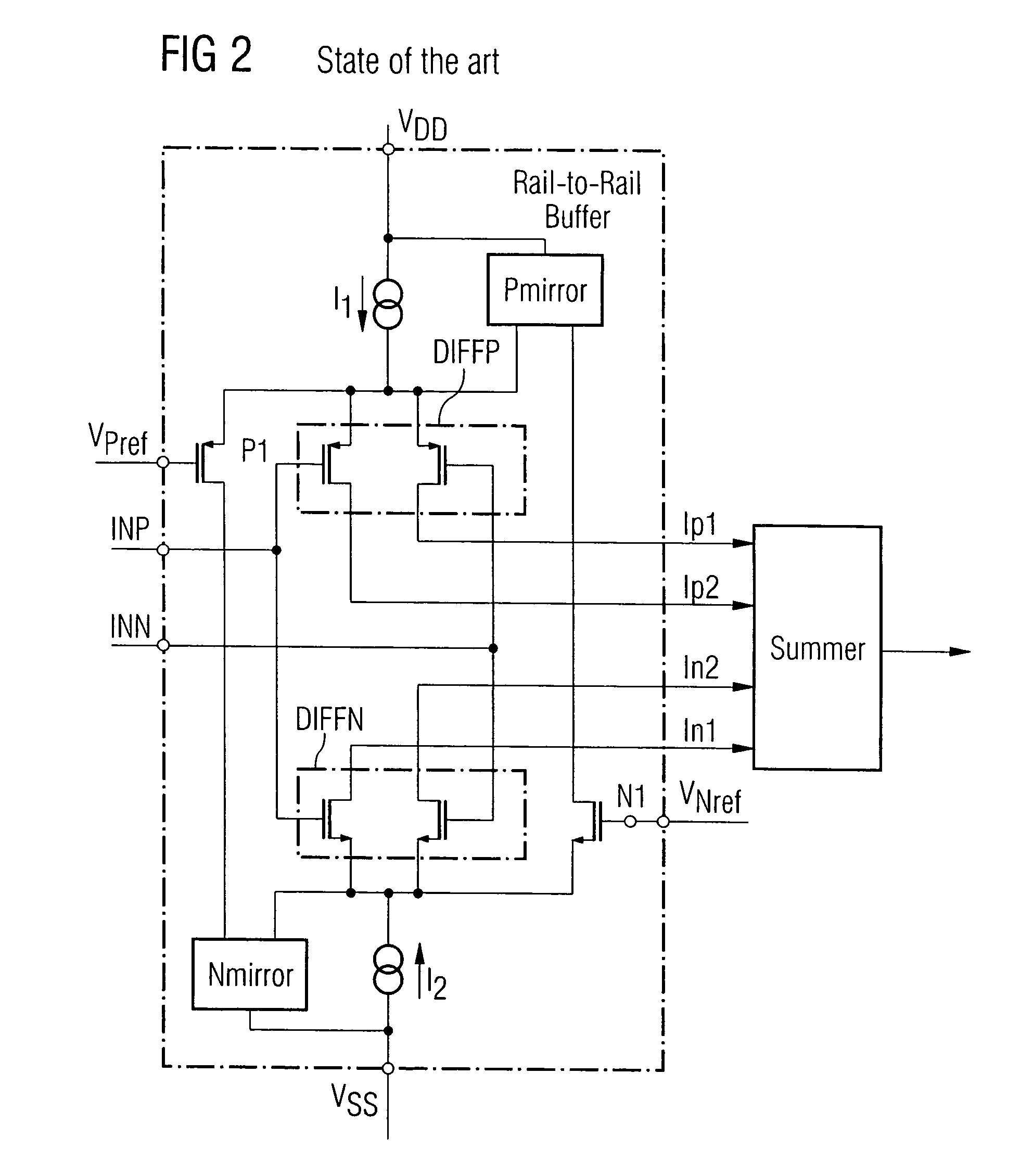Rail-to-rail-input buffer
a buffer and rail technology, applied in the direction of dc-amplifiers with dc-coupled stages, different amplifiers, semiconductor devices/discharge tubes, etc., can solve the problems of unbalanced summer in the high common mode operation region, signal contributes to additional noise, clock signal not necessarily available in a linear system, etc., to reduce distortion at the extremes of the input voltage range and the effect of distortion
- Summary
- Abstract
- Description
- Claims
- Application Information
AI Technical Summary
Benefits of technology
Problems solved by technology
Method used
Image
Examples
Embodiment Construction
[0047]As can be seen from FIG. 3 the rail-to-rail-input buffer 1 according to the present invention has a differential input having a first input terminal 2-1 and a second input terminal 2-2 for supplying an input signal.
[0048]A first differential stage 3-1 is supplied with a first reference current Iref1 which is generated by a first reference current source 4-1. The first differential stage 3-1 is formed by two PMOS-transistors having gate terminals which are connected to the input terminals 2-1, 2-2.
[0049]The rail-to-rail-input buffer 1 comprises a second differential stage 3-2 supplied with a second reference current Iref2 generated by a second reference current source 4-2. The second differential stage 3-2 is formed by two NMOS-transistors having gate terminals which are connected to the input terminals 2-1, 2-2 of the rail-to-rail-input buffer 1.
[0050]The rail-to-rail-input buffer 1 further comprises a first switching transistor 5-1 and a second switching transistor 5-2 in the...
PUM
 Login to View More
Login to View More Abstract
Description
Claims
Application Information
 Login to View More
Login to View More - R&D
- Intellectual Property
- Life Sciences
- Materials
- Tech Scout
- Unparalleled Data Quality
- Higher Quality Content
- 60% Fewer Hallucinations
Browse by: Latest US Patents, China's latest patents, Technical Efficacy Thesaurus, Application Domain, Technology Topic, Popular Technical Reports.
© 2025 PatSnap. All rights reserved.Legal|Privacy policy|Modern Slavery Act Transparency Statement|Sitemap|About US| Contact US: help@patsnap.com



